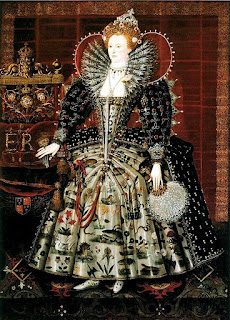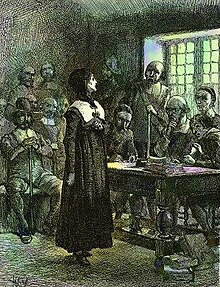Dorothea Dix
 |
| Dorothea Dix |
I
am Dorothea Dix was born 1802. I was a school teacher and used my grandmother’s
wealth to teach poor and neglected students
in my one room school house in Baltimore 1821.My book Conversations on Common
Things was made in 1824 and was made with the task of encouraging women and
girls to pursue their educational goals. It disgusts me to see the deplorable
conditions that the mentally disabled are forced to live in, they are chained
to beds and are ignored they sit on top of their own defecation. Women are
supposed to care for even the most seemingly insignificant of creature but at
the same time we are not supposed to be exposed to anything that should “dare
be unsightly”! The mere outrage at the conditions that humans are living in, our
country is founded on the basis of equality for all, but what of these men and
women, the government has done nothing for them the most interest that the
government has shown is in the action of rejecting and ignoring these men and
women from society.
Human
nature is fundamentally good but the neglect of certain rights to all humans is
wrong. Women were barred from voting, could
not hold office, and did not present such testimonials themselves before the
legislature meaning that a male representative had to read the text aloud. Pamphlets
were the only means by which women could participate in the political “scene”.
Are women not humans as well? “Moral treatment,” was developed from the work of
French psychiatrist Philippe Pinel and from new practices used at hospitals
such as England’s York Retreat My tireless work and dramatic testimonials
highlighted the appalling conditions in existing institutions and promoted the
inherent value of compassionate care.
Society
can be influenced by both active and withdrawal involvement in society. The
betterment of education and the mentally challenged both deserve active involvement,
both are pressing issues to society. A good society is made when education for
all rich and poor, men and women are
made possible. Society has willed itself into believing that the
mentally ill cannot be cured. Despite
my strong involvement in the feminist movement I was never publicly involved.
My vivid interpretations of the grueling circumstances had a powerful effect on
politicians they were shamed into taking action on behalf of the “inmates” of
mental institutions.
 |
| Dix hospital |
APPARTS: DIX HOSPITAL
A uthor: none are creditedP lace: 1872 North Carolina
P rior knowledge: Dorothea Dix was an advocate for those who were mentally challenged, blind and death, she sought to better their living conditions.
A udience: citizens in North Carolina
R eason: to show one of the first "Lunatic Asylum"s
T he main idea: The source illustrates a "Lunatic Asylum"s layout
S ignficance: Dorothea Dix was a devoted advocate for the mentally challenged. She donated land that she had inherited from her rich grandmother.
APPARTS: DIX HOSPITAL
A uthor: Dorothea DixP lace: not stated, most likely during an awareness campaign
P rior knowledge: Dorothea Dix was an advocate for those who were mentally challenged, blind and death she was disgusted with society's ignorance of those who were pushed away from public eye.
A udience: Those who supported her or wanted to learn more about Dix.
R eason: Dix asserts her reasoning fro her fight against the conditions the mentally challenged are forced to live in.
T he main idea: The source states her purpose for advocacy of the "mentally challenged"
S ignficance: During this time women were exposed to be compassionate for all, but should not "witness the impurities of society". Dix challenged this idea, she wanted to give voices to those who were ignored.
Sojouner Truth
 |
| Sojouner Truth |
Human
nature is corrupted by classes that humans are put into: gender, race, economic
class. People lie, my slave owner had .
Dumont had promised to grant me freedom
a year before the state emancipation, "if [I] would do well and be faithful." However this
promise was proved to be a fallacy, when he
claimed that a hand injury had
made me less productive. I was enraged
,I had understood fairness and duty to
be the very principle of the master-slave relationship. So I continued working
until I felt that I had done enough to satisfy my obligation to him spinning 100 pounds of wool. I later became
involved with the popular Spiritualism religious movement of the time, through
a group called the Progressive Friends, an offshoot of the Quakers. The group
believed in abolition, women's rights, non-violence, and communicating with
spirits. In 1857, I sold my home in
Northampton and bought one in Harmonia, Michigan (just west of Battle Creek),
to live with this community.
The only way that society can be
improved is through active involvement. Numerous times I have found myself traveling in order to give speeches on topics that most of the time are not
made given importance in “normal society”. In 1870, I began campaigning for the federal
government to provide former slaves with land in the "new West." I did this for seven years, with little success.As a
slave I was abused for years on end until I was fed up with it, I took my life
into my own hands, what would have happened if I did not? Would I have been
dead by now?
APPARTS: AINT I A WOMAN
A uthor: Soujouner Truth
P lace: Delivered: May 1851 Ohio at the Women's Right's Convention
Recorded: June 21, 1851 by Marcus Robinson in an issue of the Anti-Slavery Bugle
P rior knowledge:Truth was once a slave herself. She was one of the first Black women to go against a white man in court over the recovery of her son.
A udience: People who were in the convention then anyone during that time.
R eason: to motivate people and to support women in their quest for equality
T he main idea: One of Truth's first speeches (public)
S ignficance: Truth was not formally educated but what she did know she used in her favor to give power to her speeches and appealed to others.
APPARTS: MEETING WITH PRESIDENT LINCOLN
A uthor: none specified
P lace: October 29,1864
P rior knowledge: After Truth freed herself from slavery she traveled and presented speeches for the abolitionist movement. Lincoln was not always in support of abolition.
A udience: Anyone during the time that was interested in Truth or Lincoln's movements
R eason: To gain people for the Abolitionist movement
T he main idea: During the time abolition was controversial as slavery became the South's source of economic power. The fact that Lincoln met with Truth, who was not only an abolitionist but a female abolitonist gave many hope.
S ignficance: Truth was a very strong woman and extremely educated to her work as both a feminist and abolitionist.















